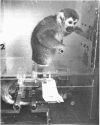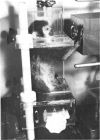Abstract
Organic solvents are pervasive in the communal and industrial environments. Although many are potent central nervous system agents, clearly delineated behavioral effects have played only a minor role in the formation of exposure standards. A comprehensive behavioral pharmacology and toxicology of these compounds is one aim of US/USSR collaboration. The current report describes some actions of carbon disulfide and toulene. Earlier data about the actions of carbon disulfide on pigeon operant performance indicated disruption of schedule-controlled key-pecking. Primate data are now described from a situation designed to determine aversive thresholds to electrical stimulation. Effective concentrations of carbon disulfide produced both a rise in the amount of electric shock tolerated and a diminution of the response force exerted by the monkeys. In experiments with toluene, pigeons were shown to elevate key-pecking rate in an operant situation at certain concentrations. Toluene also was studied for its capacity to maintain self-administration in the same way as drugs of abuse. Monkeys worked to gain access to toulene vapor just as they work for opiates or amphetamines. The current experiments demonstrate how comprehensive the range of behavioral toxicology needs to be to deal with environmental health issues.
Full text
PDF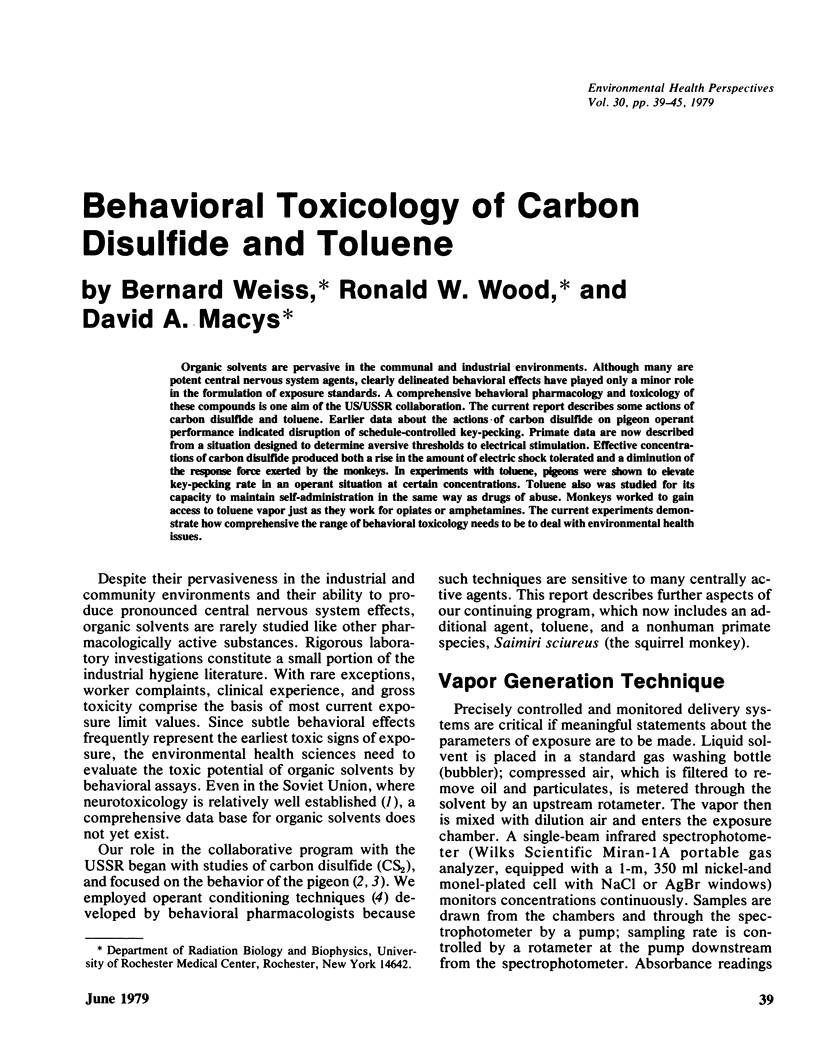
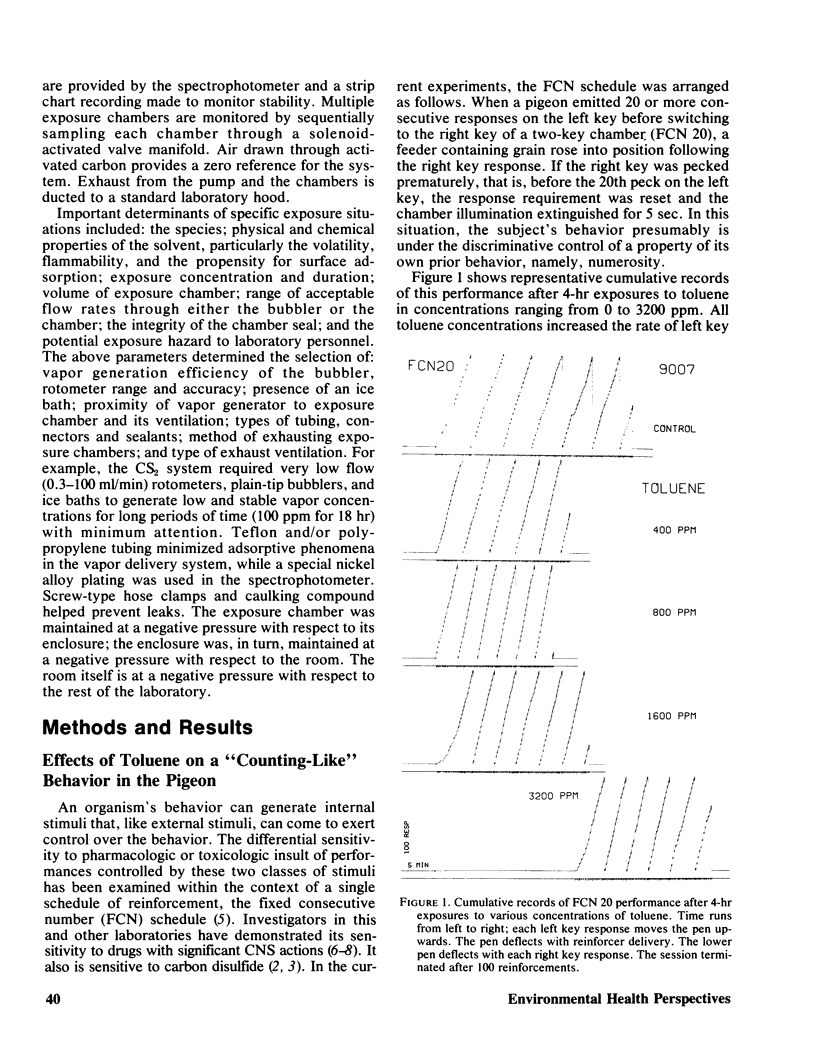
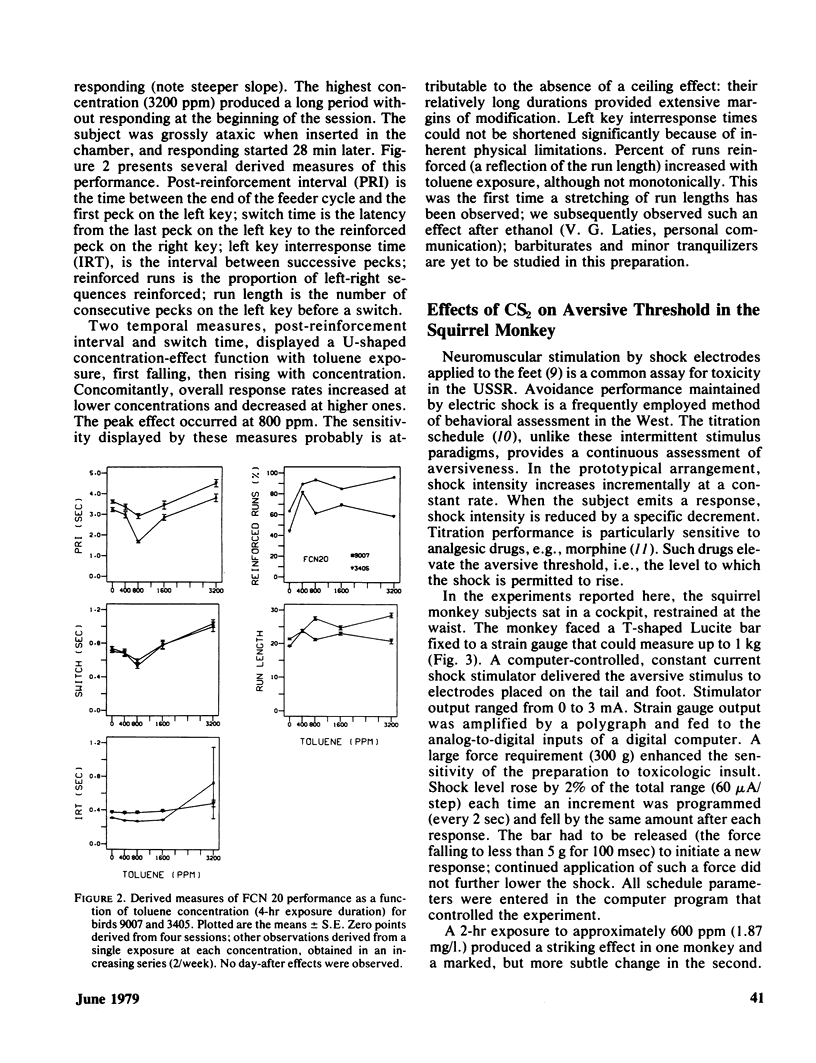
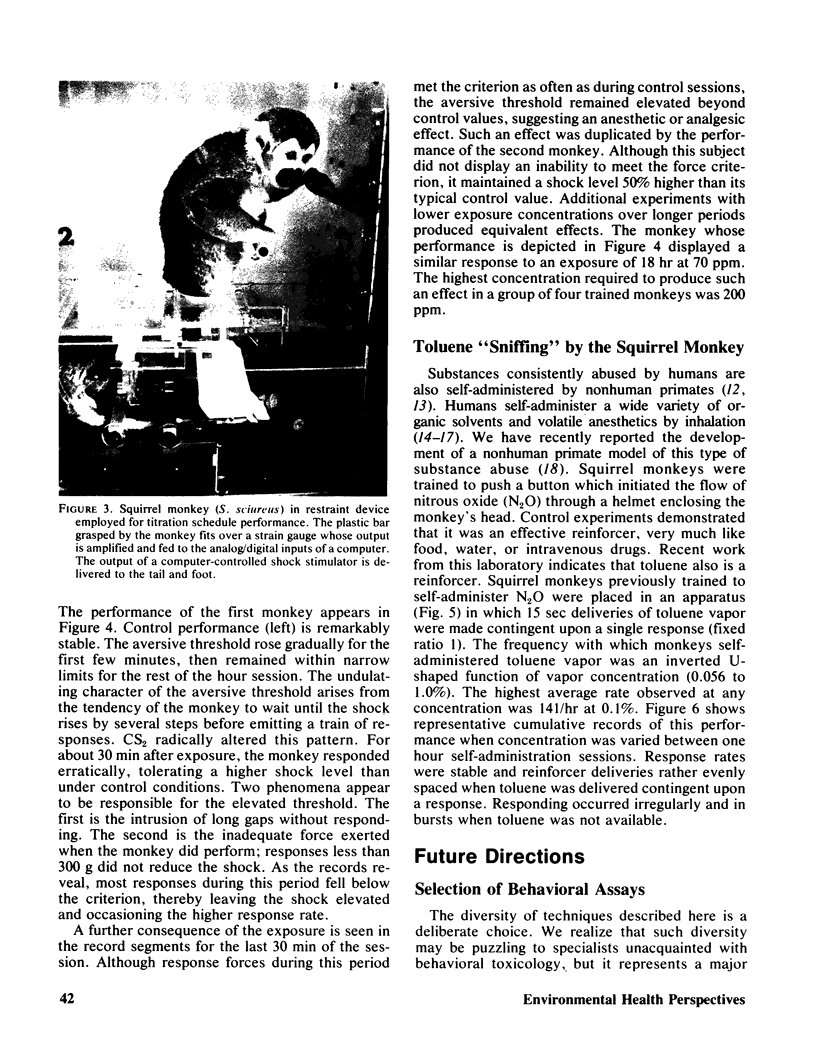
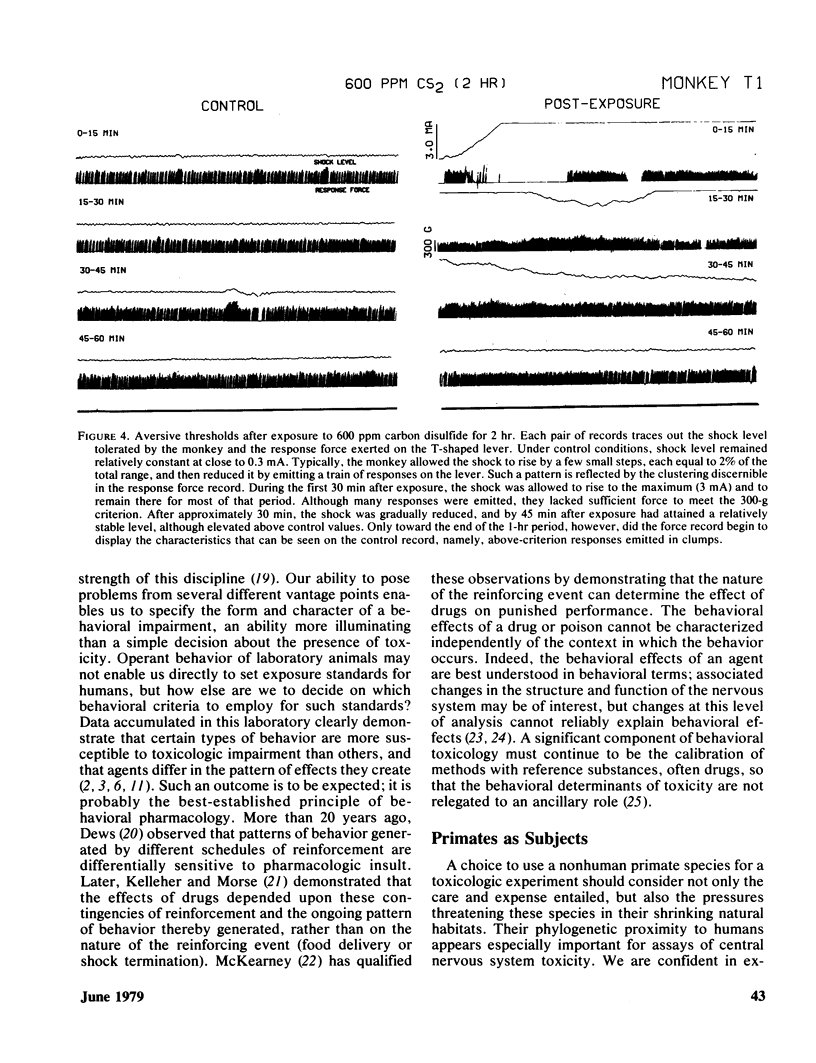
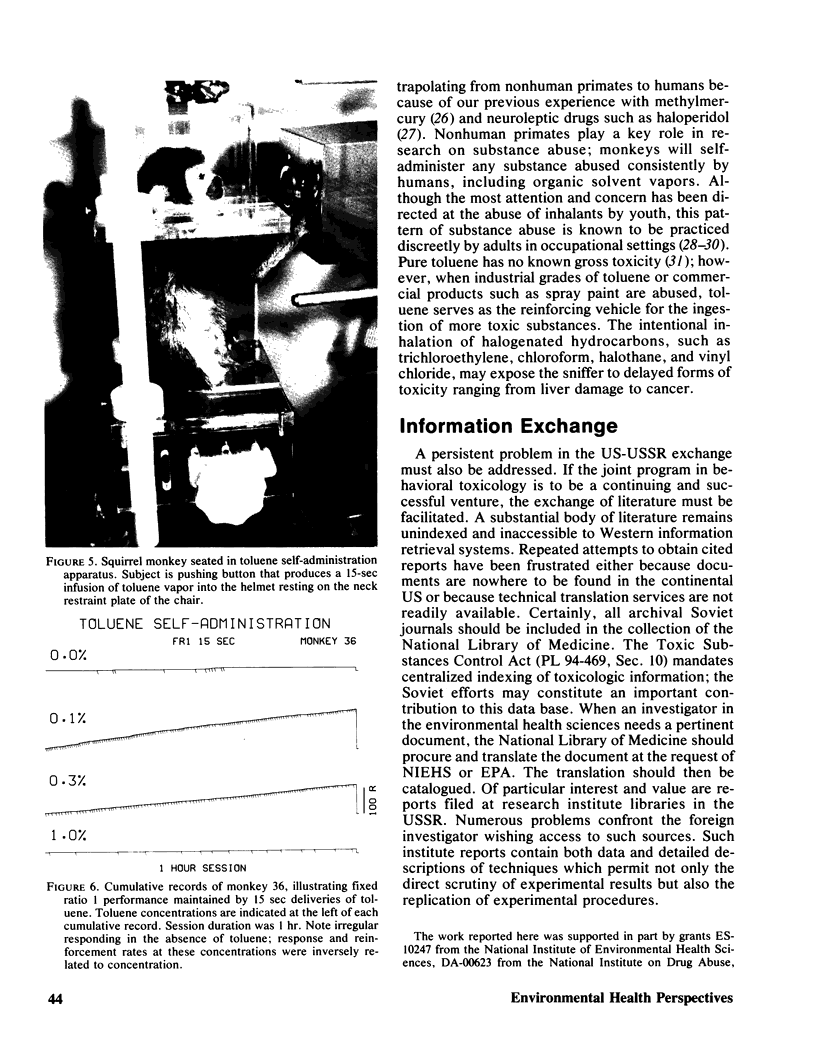
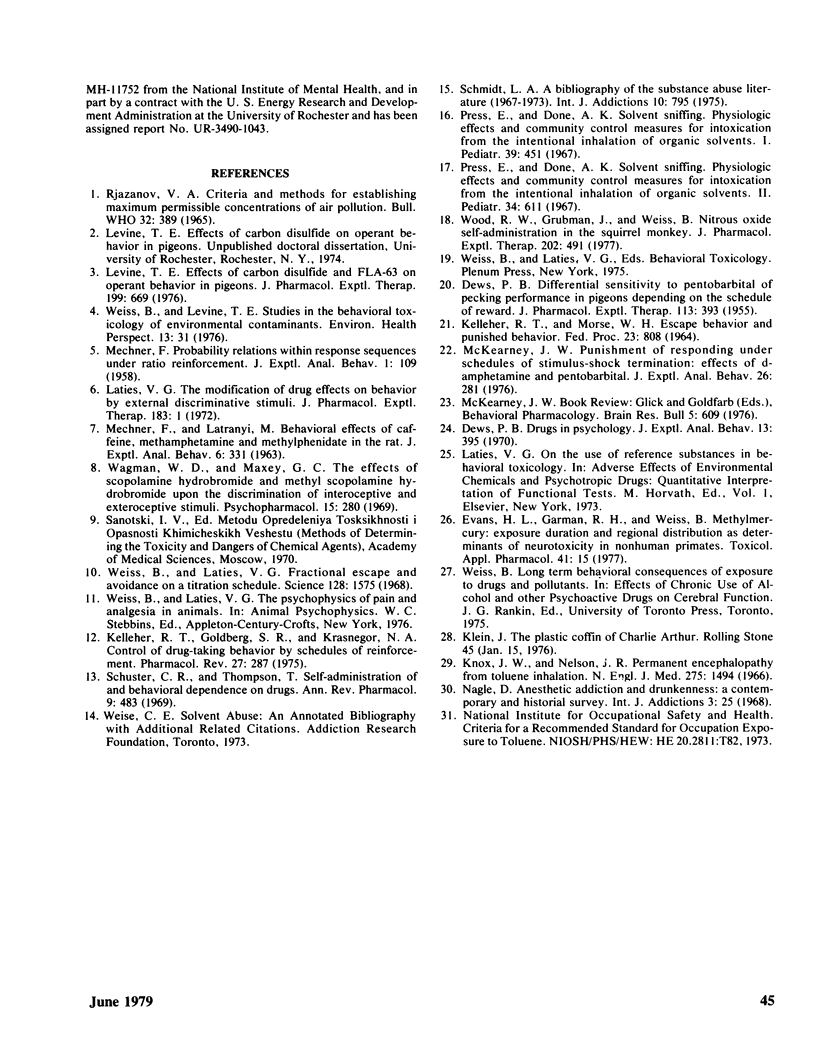
Images in this article
Selected References
These references are in PubMed. This may not be the complete list of references from this article.
- DEWS P. B. Studies on behavior. I. Differential sensitivity to pentobarbital of pecking performance in pigeons depending on the schedule of reward. J Pharmacol Exp Ther. 1955 Apr;113(4):393–401. [PubMed] [Google Scholar]
- Evans H. L., Garman R. H., Weiss B. Methylmercury: exposure duration and regional distribution as determinants of neurotoxicity in nonhuman primates. Toxicol Appl Pharmacol. 1977 Jul;41(1):15–33. doi: 10.1016/0041-008x(77)90051-5. [DOI] [PubMed] [Google Scholar]
- KELLEHER R. T., MORSE W. H. ESCAPE BEHAVIOR AND PUNISHED BEHAVIOR. Fed Proc. 1964 Jul-Aug;23:808–817. [PubMed] [Google Scholar]
- Knox J. W., Nelson J. R. Permanent encephalopathy from toluene inhalation. N Engl J Med. 1966 Dec 29;275(26):1494–1496. doi: 10.1056/NEJM196612292752608. [DOI] [PubMed] [Google Scholar]
- Laties V. G. The modification of drug effects on behavior by external discriminative stimuli. J Pharmacol Exp Ther. 1972 Oct;183(1):1–13. [PubMed] [Google Scholar]
- Levine T. E. Effects of carbon disulfide and FLA-63 on operant behavior in pigeons. J Pharmacol Exp Ther. 1976 Dec;199(3):669–678. [PubMed] [Google Scholar]
- MECHNER F., LATRANYI M. Behavioral effects of caffeine, methamphetamine, and methylphenidate in the rat. J Exp Anal Behav. 1963 Jul;6:331–342. doi: 10.1901/jeab.1963.6-331. [DOI] [PMC free article] [PubMed] [Google Scholar]
- McKearney J. W. Punishment of responding under schedules of stimulus-shock termination: effects of d-amphetamine and pentobarbital. J Exp Anal Behav. 1976 Sep;26(2):281–287. doi: 10.1901/jeab.1976.26-281. [DOI] [PMC free article] [PubMed] [Google Scholar]
- Mechner F. Probability Relations within Response Sequences under Ratio Reinforcement. J Exp Anal Behav. 1958 Apr;1(2):109–121. doi: 10.1901/jeab.1958.1-109. [DOI] [PMC free article] [PubMed] [Google Scholar]
- doi: 10.1901/jeab.1970.13-395. [DOI] [PMC free article] [Google Scholar]
- Press E., Done A. K. Solvent sniffing. Physiologic effects and community control measures for intoxication from the intentional inhalation of organic solvents. I. Pediatrics. 1967 Mar;39(3):451–461. [PubMed] [Google Scholar]
- RJAZANOV V. A. CRITERIA AND METHODS FOR ESTABLISHING MAXIMUM PERMISSIBLE CONCENTRATIONS OF AIR POLLUTION. Bull World Health Organ. 1965;32:389–398. [PMC free article] [PubMed] [Google Scholar]
- Schmidt G. L. A bibliography of substance abuse literature 1967-1973. Int J Addict. 1975;10(5):795–800. doi: 10.3109/10826087509027338. [DOI] [PubMed] [Google Scholar]
- Schuster C. R., Thompson T. Self administration of and behavioral dependence on drugs. Annu Rev Pharmacol. 1969;9:483–502. doi: 10.1146/annurev.pa.09.040169.002411. [DOI] [PubMed] [Google Scholar]
- WEISS B., LATIES V. G. Fractional escape and avoidance on a titration schedule. Science. 1958 Dec 19;128(3338):1575–1576. doi: 10.1126/science.128.3338.1575. [DOI] [PubMed] [Google Scholar]
- Wagman W. D., Maxey G. C. The effects of scopolamine hydrobromide and methyl scopolamine hydrobromide upon the discrimination of interoceptive and exteroceptive stimuli. Psychopharmacologia. 1969;15(4):280–288. doi: 10.1007/BF00401682. [DOI] [PubMed] [Google Scholar]
- Wood R. W., Grubman J., Weiss B. Nitrous oxide self-administration by the squirrel monkey. J Pharmacol Exp Ther. 1977 Sep;202(3):491–499. [PubMed] [Google Scholar]



